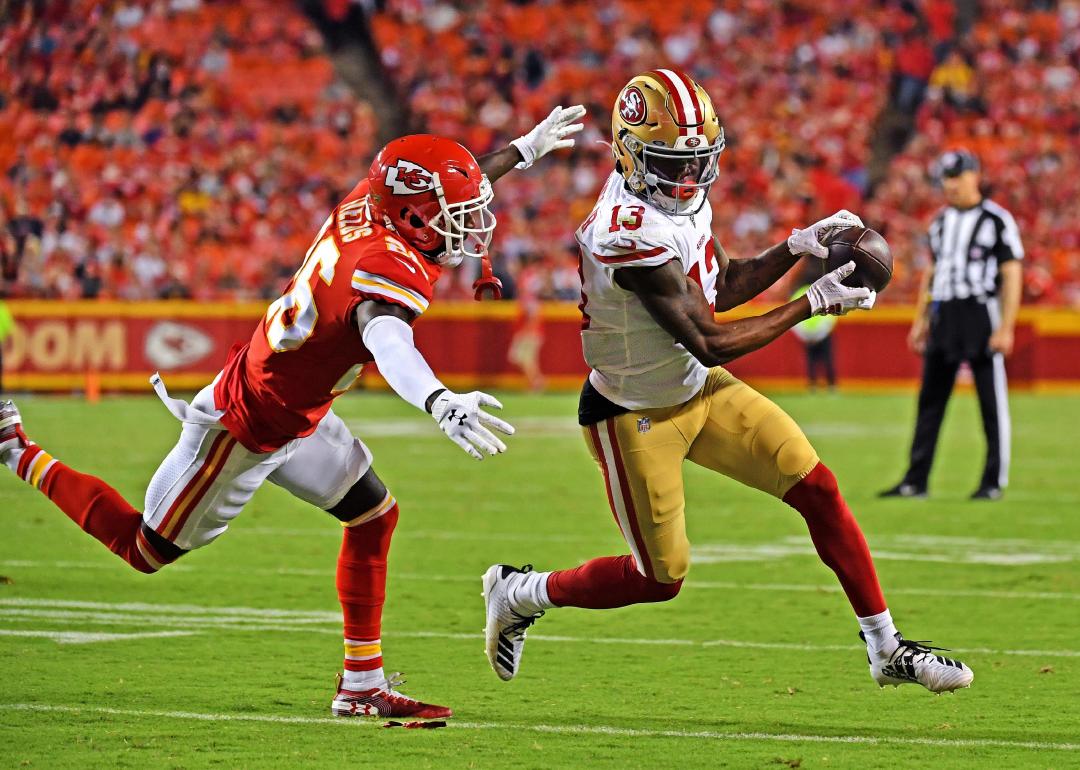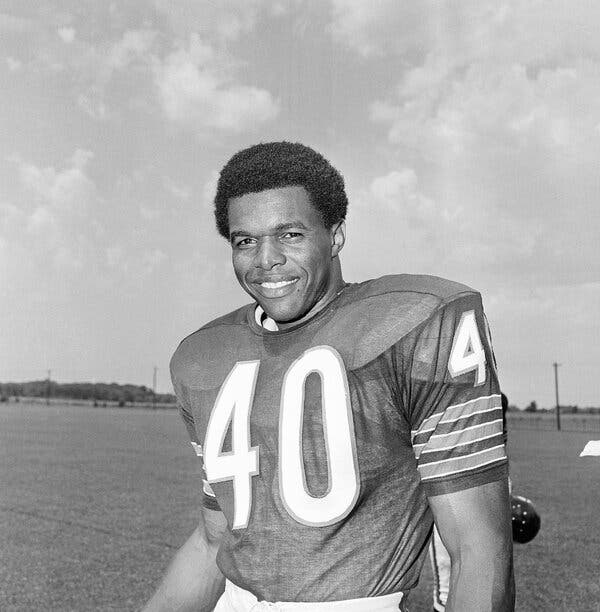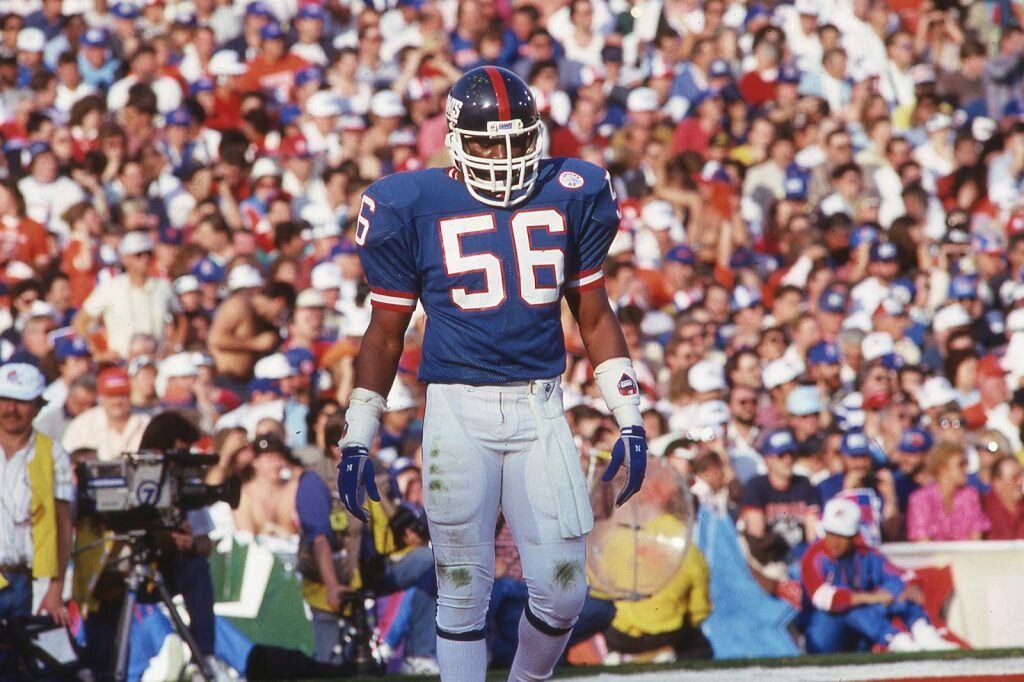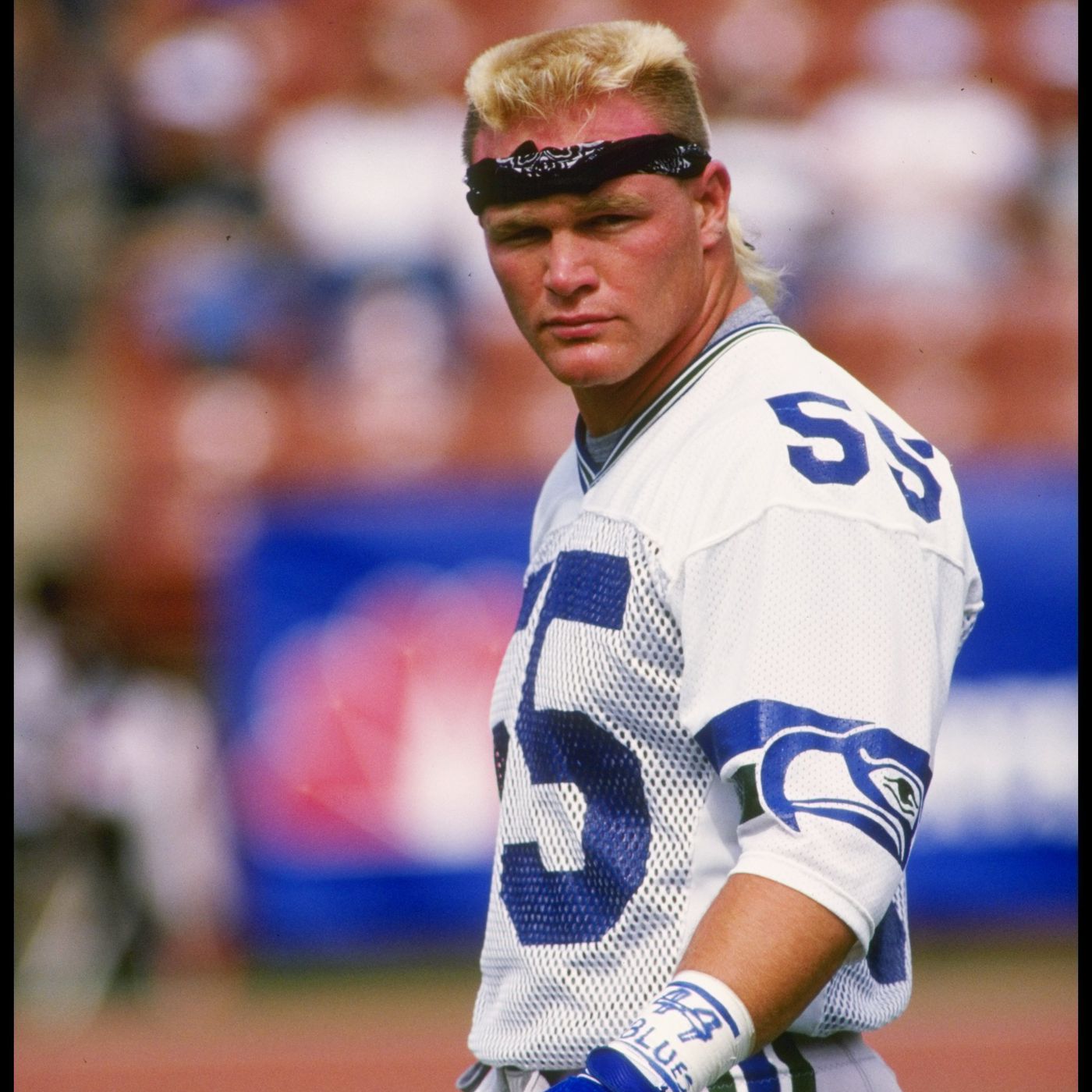Even in this era of high-octane passing games, the running back remains critical to the success of an offense. A great ground game can make the difference between winning and losing, and often leads a team to a championship.
Who is the best running back in NFL history? Like so many sports discussions, opinions abound, and there really is no clear-cut answer. Or is there?
Here are A Dozen Dandies – the twelve best running backs ever to play the game. All are or are soon to be, in the Pro Football Hall of Fame.
Gale Sayers played in only 68 games, fewest of any player on this list. Of our Dozen Dandies, all but Jim Brown and Earl Campbell played in at least twice as many as Sayers. As a rookie, the Kansas Comet set a league record and rookie record by scoring 22 touchdowns — including a record-tying six in one game — and was named 1965 NFL Rookie of the Year. Sayers was First Team All-Pro in each of his first five seasons. He led the league in rushing twice and was voted to the 1960s All-Decade Team. Sayers suffered a horrific knee injury in 1968, then came back to lead the league in rushing the following year. A second knee injury sustained in 1970 prematurely ended the career of a man that could possibly have been the greatest runner of all time.
The quintessential dual threat, Marshall Faulk amassed more than 12,000 yards rushing and 6,000 yards receiving in a dozen NFL seasons, more than any back ever to play the game. A seven-time Pro Bowler, Faulk led the St. Louis Rams to back-to-back Super Bowls, winning the title in 1999. He was Offensive Player of the Year for three straight seasons and was named NFL MVP in 2000 after leading the league in rushing touchdowns. Faulk played five seasons with the Colts and is enshrined in their Ring of Honor. He played seven years with the Rams, who retired his number 28. The quicksilver back set over a dozen NFL records, including fastest player to gain 17,000 yards from scrimmage [142 games].
One of the greatest goal line and short yardage backs in history, Marcus Allen is the first running back to gain more than 10,000 yards rushing and 5,000 receiving. He led the league in rushing touchdowns twice and was named 1985 NFL MVP after leading the league in rushing. Allen played 11 seasons for the Raiders, then five more with the Chiefs. He went to the Pro Bowl with both. Marcus is the only player to have won the Heisman Trophy, an NCAA championship, a Super Bowl and be named NFL and Super Bowl MVP.
Eric Dickerson was the second player to rush for over 2,000 yards in a season. The 2,105 yards he amassed in 1984 remains an NFL single-season record. Dickerson played for four teams between 1983 and 1993 and led the league in rushing four times. The 1983 NFL Rookie of the Year got to 10,000 career rushing yards faster than any back in history, reaching the milestone in just 91 games. A member of the 1980s All-Decade Team, Dickerson gained 13,259 yards in his career, second-most of all time at the time of his retirement.
O.J. Simpson
The NFL’s all-time rushing leader, Emmitt Smith played in more than three times as many games as Gale Sayers and nearly twice as many as Earl Campbell. Winner of three Super Bowls as one of [along with Troy Aikman and Michael Irvin] The Triplets, Smith led the league in rushing four times. In 13 seasons in Dallas and two in Arizona, the former Florida All-American scored 175 NFL touchdowns. Smith and Jerry Rice are the only non-kickers to score more than 1,000 NFL points. In 2002, Emmitt passed Walter Payton as the league’s all-time rushing leader. His 18,355 career yards are the most in history, but Smith had 571 more carries than Payton and played in 36 more games. The 1990 Offensive Rookie of the Year, Smith was named to the 1990s All-Decade Team.
In nine seasons with the San Diego Chargers and two with the New York Jets, LaDainian Tomlinson won two consecutive NFL rushing titles. In 2006, he scored 31 touchdowns — 28 of them rushing — both NFL records. LT played in five Pro Bowls and was elected to the 2000s All-Decade Team. Tomlinson retired with over 50 NFL records and amassed 15,000 yards from scrimmage faster than any player in history [121 games]. Along with Dan Fouts, Junior Seau and Lance Alworth, LT is one of four Chargers to have his jersey retired.
Earl Campbell played in just 115 NFL games. Only Gale Sayers played in fewer among the backs on this list. One of the great power runners ever to lace up a pair of cleats, Campbell won the 1978 Heisman before the Houston Oilers made him the first pick of the NFL Draft. As a rookie, he led the league in rushing to earn NFL Rookie of the Year and MVP honors. Campbell was Offensive Player of the Year in each of his first three seasons in the league and played in five Pro Bowls. The greatest Oiler in franchise history, Earl twice led the league in rushing touchdowns and was named to the 1970s All-Decade Team despite playing only two seasons in the decade – 1978 and 1979.
The only active player on this list, Adrian Peterson was named Offensive Rookie of the Year in 2007. A three-time NFL rushing leader, Peterson twice led the league in rushing touchdowns. He played in seven Pro Bowls and is the third-fastest player to reach 10,000 career rushing yards. Peterson’s 2011 season ended prematurely when he tore the ACL and MCL in a knee. Nine months later, AP returned to rush for 2,097 yards, just eight yards shy of Eric Dickerson’s single-season record. It was perhaps the most impressive comeback in history and earned Peterson the 2012 NFL MVP Award. As a rookie, Peterson set the NFL single-game rushing mark. Eight years later, the 30-year-old became the oldest running back ever named First Team All-Pro.
Barry Sanders was named to the Pro Bowl in each of his ten NFL seasons. Following one of the greatest individual seasons in college football history, Sanders was awarded the 1988 Heisman Trophy. Selected third overall [one spot after Tony Mandarich] by the Detroit Lions, Sanders was named 1989 Rookie of the Year. He led the league in rushing four times. After becoming the third player to rush for over 2,000 yards in a season, Sanders was named 1997 NFL MVP. At 5’8” and 200 pounds, the electrifying scatback was nearly impossible to tackle, averaging five yards per carry for his career. Consistent and durable, Sanders averaged over 1,500 rushing yards per season and just under 100 yards per game. A member of the 1990s All-Decade Team, Sanders shocked the world when he retired at 30. Still, in his prime, he was less than 1,500 yards shy of breaking the NFL’s all-time rushing record.
Perhaps the greatest all-around football player ever to strap on a helmet, Walter Payton could run, block and catch passes. Sweetness threw for eight NFL touchdowns and was also the Chicago Bears’ backup punter and placekicker. A nine-time Pro Bowler, Payton led the Bears to the only Super Bowl victory in franchise history. He was named 1977 NFL MVP after leading the league in rushing and touchdowns. Payton was so good he was named to the All-Decade Team in both the 1970s and 1980s. His stiff arm was lethal and his attitude humble. At the time of his retirement, the great Walter Payton was the NFL’s all-time leader in rushing, all-purpose yards, touchdowns, carries, yards from scrimmage, and receptions by a back. He also held the league’s single-game rushing mark of 275 yards.
Jim Brown is the greatest running back in history. “When running backs get in a room together,” said Brown, “they don’t argue about who is the best.” Even Barry Sanders’ father, William, considers Brown the best he ever saw. An extraordinary athlete, Brown excelled in four sports at Syracuse University. He is a member of the Lacrosse, College Football and Pro Football Halls of Fame. A three-time NFL MVP, Brown was named All-Pro in each of his nine seasons. He led the league in rushing eight times in nine years and is the only player in NFL history to average over 100 rushing yards per game for an entire career. Combining speed and power, Brown averaged a whopping 5.2 yards per carry. Jim Brown retired at the top of his game. An aspiring actor, Brown was in London filming The Dirty Dozen in July 1966. Due to production delays, the 29-year-old perennial Pro Bowler was going to miss training camp. Browns owner Art Modell threatened to fine the greatest player in pro football history $100 per day for every day he missed camp. Rather than being strong-armed by Modell, Brown – feeling disrespected — retired from football, announcing his decision from the set of the film.









